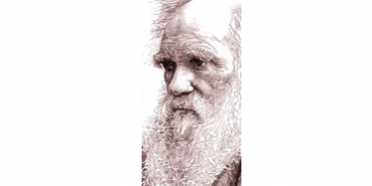Let’s just say my thinking has evolved…
After I met my birthfather, Richard Callaway, I became convinced we are so completely hard-wired to be who we are, there’s really little we can do to move the needle. (See my previous blog: “There’s No Training After Toilet Training”.) And yes, I still do believe human beings are very hard-wired—much more than we want to understand or appreciate. Recently however, I have seen the real value of effective executive coaching.
Last year, I met with a prospective TEC member, Jim. Jim had unexpectedly become his company’s CEO. Originally hired as an Executive Vice President, he was supposed to be part of his company’s long-term succession plan. Unfortunately, the incumbent CEO died unexpectedly. Rather than being part of an orderly succession, Jim found himself immediately thrust into the CEO role. Making matters even more difficult, the former CEO was beloved by the executive team and the entire staff. Jim had HUGE shoes to fill, but he was a mess. He lacked confidence. He wasn’t sure he could fill his esteemed predecessor’s role.
We agreed to meet a year later. Candidly, I did not expect we’d even have this follow-up meeting because I doubted he’d make it 12 months. But when I met with Jim again, I was pleasantly surprised. He displayed excellent executive presence. He had transformed the team into his team. Most important, he had transformed himself. He was definitely in control; he truly seemed like a different person from the prior year. I said, “Jim, what happened? You are a changed person.” His reply? “I have a great executive coach!”
I thought, “I have to meet this coach!”
I reached out to Jim’s coach and asked how he had helped Jim evolve to a CEO-level leader in such a short time. The coach’s response was pretty simple: Jim had the capability all along. The coach expanded on this rational: Jim clearly was well vetted for his CEO role; otherwise he wouldn’t have been hired in the first place. Clearly, the unfortunate circumstances represented a major change for Jim and the organization; the coach just needed to assist Jim in rapidly stepping up. And so, with the basics in place, Jim and his coach developed a five-step plan:
- Surface and reveal Jim’s inner greatness and create a better sense of self-awareness.
- Help Jim identify his own blind spots.
- Establish short-term and long-term personal and professional goals and create a written action plan.
- Think of creative ways to problem solve.
- Identify personal BHAGs (Big Hairy Audacious Goals).
I shared this story with another executive coach, Rod Buchen. (Rod is one of two executive coaches with whom I now work.) Rod wasn’t at all surprised at this story and related to me one of his success case studies:
Problem Situation: A top performing Field Manager gets promoted to Direct a critical business expansion initiative at headquarters. Results fall far below expectations!
Action: The Company engages a senior level executive coach who works with the new Director for 14 months. During this time, they interface a total of 36 times, either face-to-face or by phone, and also frequently communicate by email.
The new Director involves the coach in virtually every aspect of his work life:
- Rethinking his overall strategy;
- Updating and fine-tuning business plans;
- Aligning his team to execute the top corporate priorities
- Creating compelling presentations;
- Planning for and debriefing both in group and 1-on-1 meetings;
- Building solid internal alliances up, down, and across functional lines;
- Writing a customized, progressive personal development action plan to add new knowledge and skills to his leadership toolbox; and
- Redefining his leadership brand.
Result: Every single key performance indicator improved and total revenue for the group increased 72%!
ROI on coaching expense = 12,000%
Via TEC (The Executive Committee), we work closely and often intimately with our CEO members. And while TEC continues to be justly heralded as transformational for those CEOs who fully commit to it, the TEC relationship is just not the same as an executive coaching relationship. Also, TEC isn’t necessarily serving the other executives in our member organizations, an essential adjunct and complement to a well-rounded executive coaching engagement. I now believe if you want to help executives on your leadership team reach their full potential, you should also consider hiring an executive coach for them.
So as I said, my thinking has “evolved” on the topic of executive coaching. Maybe Darwin was right after all!








